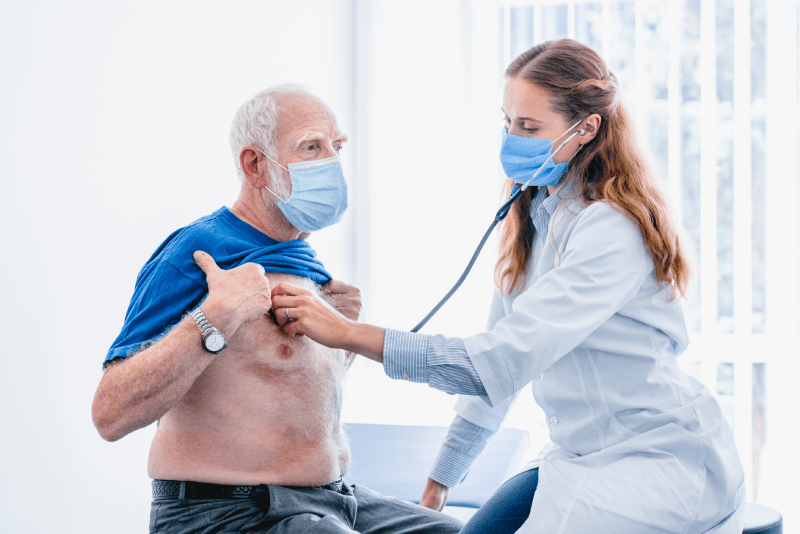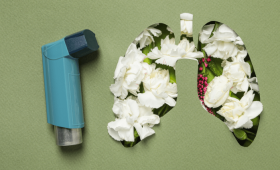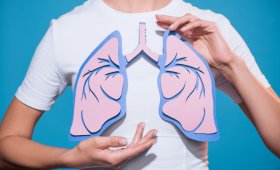Can COPD Be Completely Cured In Turkey?
Chronic Obstructive Pulmonary Disease (COPD) is a progressive lung disease affecting millions of people. The most fundamental question in patients’ minds is whether this chronic condition can be eliminated entirely. While modern medicine and advanced treatment centers in Turkey cannot completely cure COPD, they offer a wide range of effective methods to halt the progression of the disease, control symptoms, and radically improve the quality of life. Turkey provides access to international standards of expertise and state-of-the-art treatments in this field.
Is COPD A Completely Curable Disease?
Unfortunately, COPD is a chronic disease that cannot be completely treated (cured), as the structural damage that has occurred is irreversible. The fundamental permanent damage to the air sacs (alveoli) and airways in the lungs (emphysema and chronic bronchitis) cannot be reversed. However, the goal of treatment is to pause the progression of the disease, prevent exacerbations, and significantly improve the patient’s quality of life by controlling symptoms such as shortness of breath. With early diagnosis and a disciplined treatment program, patients can once again enjoy healthy breathing.
Is The Primary Goal Of Treatment To Stop The Disease?
Yes, the primary goal of COPD treatment is to slow down or halt the progression of the disease and preserve the existing lung function. COPD is a progressive disease that causes increasing breathing difficulties over time. Treatment aims to prevent this progression, particularly through smoking cessation, regular medication use, and pulmonary rehabilitation. If the disease cannot be halted, lung functions rapidly decline and the quality of life diminishes; thus, every patient’s adherence to treatment is critical for minimizing future function loss.
What New Methods Are Promising In COPD Treatment?
Promising new methods in COPD treatment include bronchoscopic interventions (BLVR – Bronchial Lung Volume Reduction), biological agents (for those with Asthma-COPD Overlap), and stem cell trials in the field of regenerative medicine. Interventions such as bronchoscopic valve or coil placement reduce emphysematous areas, enabling healthier regions to function better. Although still in the experimental stage, stem cell therapy holds great potential for repairing damaged lung tissue or reducing chronic inflammation. These innovative approaches open a new treatment pathway, especially for patients with advanced disease.
What Role Does Pulmonary Rehabilitation Play In Treatment?
Pulmonary rehabilitation is an indispensable and highly effective component of COPD treatment. This program aims to reduce not only shortness of breath but also the fatigue and anxiety experienced by the patient during daily life activities. Thanks to this holistic approach, which consists of physiotherapy, education, and psychological support, patients learn to utilize their limited lung capacity in the most efficient way. Regular exercise increases muscle strength, elevating exercise tolerance that had fallen due to breathlessness, and reduces the risk of hospitalization.
Can Medication Completely Cure The Disease?
Medication cannot completely cure COPD, but it is the cornerstone of controlling the disease’s symptoms and preventing exacerbations. Bronchodilators used in treatment widen the narrowed airways, allowing the patient to breathe more comfortably. Corticosteroids used in advanced stages reduce inflammation. Regular and correct use of these medications slows down the rate of decline in lung function but does not have the power to eliminate permanent lung damage (emphysema).
What Are The Surgical Options In COPD Treatment?
There are two fundamental surgical options in COPD treatment: Lung Volume Reduction Surgery (LVRS) and Lung Transplantation. LVRS involves removing the most severely damaged, non-functional parts of the lung in advanced emphysema patients, allowing the healthy areas and the diaphragm to function more efficiently. Lung transplantation, conversely, is considered the last and only permanent solution for patients who continue to experience respiratory failure despite all other treatments and meet specific criteria. These surgical methods can significantly enhance the patient’s quality of life and lifespan.
What Is Bronchoscopic Volume Reduction (BLVR) And Who Is It Suitable For?
Bronchoscopic Lung Volume Reduction (BLVR) is a minimally invasive method developed as an alternative to surgery. Valves or coils are placed into non-functional airways via a bronchoscope in emphysema patients. These valves stop air from entering the damaged lung area, deflating the trapped air, which allows the healthier lung sections and the diaphragm to function better. BLVR is particularly suitable for patients whose emphysema damage is localized and who are at high surgical risk.
Why Is Quitting Smoking Of Vital Importance For Treatment Success?
Quitting smoking is the most important, most cost-effective, and most vital step in COPD treatment. Cigarette smoke is the primary cause of the disease, and if not quit, no medication or rehabilitation program can halt the decline in lung function. Quitting smoking brings the rate of decline in lung function closer to normal levels and increases the effectiveness of all medications. This vital decision not only prolongs the patient’s lifespan but also minimizes the frequency of hospitalization by reducing chronic inflammation.
At What Stage Is Stem Cell Therapy Applied In COPD?
Stem cell therapy for COPD is an experimental approach that is currently in the clinical trial and research stage in some advanced centers worldwide, including Turkey. The goal is to use stem cells derived from the patient’s own fat tissue or bone marrow to repair damaged lung tissue or reduce chronic inflammation. Definitive results are awaited before this treatment becomes a widespread standard. Some innovative centers in Turkey provide access to this potential solution for international patients.
How Can The Quality Of Life Be Improved In Advanced Stage COPD?
The key to improving the quality of life in advanced-stage COPD is the aggressive management of symptoms and support for respiratory failure. Pulmonary rehabilitation reduces shortness of breath and enables patient mobilization. Long-term home oxygen therapy and, when necessary, Non-Invasive Ventilation (NIV) devices meet the body’s oxygen needs, reducing fatigue and the burden on the heart. Receiving psychosocial support for pain and anxiety management also plays a critical role in sustaining the quality of life.
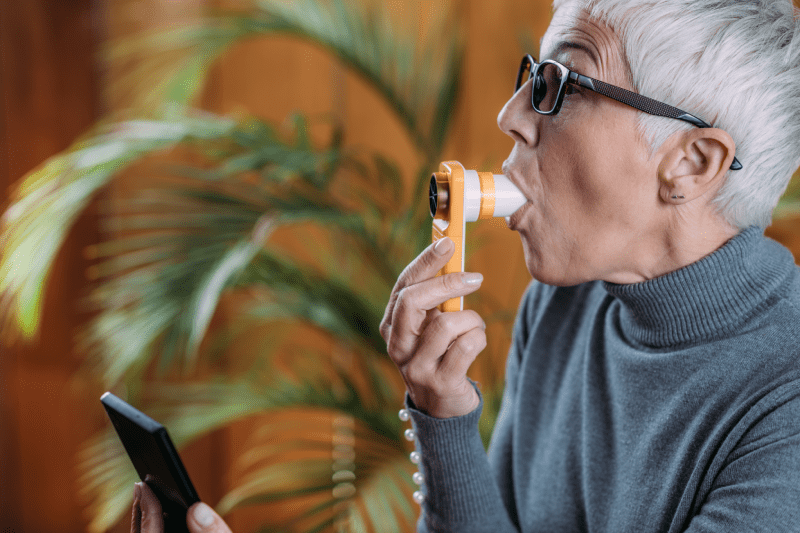
What Types Of Medications Are Used In COPD Treatment?
The main types of medications used in COPD treatment are bronchodilators (drugs that widen the airways). These are divided into short-acting (for emergencies) and long-acting (for daily control). In advanced-stage patients who experience frequent exacerbations, inhaled corticosteroids are used in addition to these bronchodilators (triple therapies). Most of these medications are delivered directly to the lungs via inhaler devices (metered-dose inhalers or dry powder) to maximize effectiveness and minimize side effects.
Which Patients Can Be Candidates For Lung Transplantation?
Lung transplantation is an option for COPD patients who have experienced failure of all other treatment options and who are typically under 65 years old, free from other serious comorbidities (cancer or uncontrolled heart failure), and physically and psychologically fit to tolerate the surgery. This major operation, which can significantly improve the patient’s life expectancy and quality, requires a comprehensive and multidisciplinary assessment process to determine suitable candidates.
What Are The Long-Term Success Criteria For COPD Treatment?
The long-term success criteria for COPD treatment focus not only on the values from pulmonary function tests (FEV1) but also on the patient’s quality of life, exercise capacity, and frequency of hospitalization. Successful treatment reduces the number of exacerbations, lowers the level of shortness of breath, and allows the patient to participate more actively in social life. The sustainability of these criteria in the long term is the most important evidence that the treatment has achieved its goal.
What Are The First Steps A Patient Diagnosed With COPD Should Take?
The first and most important steps a patient diagnosed with COPD should take are to immediately quit smoking and start personalized medication therapy. Following these steps, starting a pulmonary rehabilitation program at a specialized center and completing the vaccination schedule (flu and pneumonia vaccines) are vital. This early and holistic intervention ensures the disease is brought under control in the early stages and its progression is slowed down, directly affecting long-term quality of life.
What Are The Nutritional Recommendations For Patients Living With COPD?
Nutrition is critical for patients living with COPD in terms of conserving energy and strengthening respiratory muscles. As the disease progresses, loss of appetite and muscle wasting can occur, thus small, frequent meals that are high in calories and protein are recommended. Excessive carbohydrate consumption can lead to increased carbon dioxide production, worsening shortness of breath; therefore, a balanced diet focusing on fat and protein is important.
Does Oxygen Therapy Cure COPD?
No, long-term oxygen therapy (LOT) does not cure COPD, but it is a proven method that prolongs life and improves quality of life in patients with advanced respiratory failure. Providing sufficient oxygen reduces damage to vital organs (especially the heart and brain). Using oxygen for at least 15 hours a day as advised by a doctor alleviates the patient’s fatigue and shortness of breath while easing the burden on the heart, providing permanent benefit.
What Is The Most Effective Way To Prevent Exacerbations In COPD?
The most effective way to prevent exacerbations (acute worsening) in COPD is to absolutely avoid triggers like cigarette smoke and air pollution, use regular and correct inhaler medications, and follow the vaccination schedule (flu and pneumonia). Since exacerbations cause permanent worsening of lung functions, these protective measures reduce the risk of hospitalization and keep the disease progression under control.
Which Diseases Make COPD Treatment More Difficult?
Comorbidities such as heart failure, coronary artery disease, and diabetes make COPD treatment more difficult. Heart diseases can mimic or aggravate COPD symptoms by causing shortness of breath. Diabetes can increase the risk of infection and prolong the healing process. Therefore, for successful COPD treatment, it is essential that these comorbidities are also managed and controlled effectively through a multidisciplinary approach.
Can New-Generation Drug Treatments Halt The Progression Of The Disease?
New-generation drug treatments (triple combination inhalers and biological agents applied to selected patients) can significantly slow down the progression of the disease but cannot stop it completely. Triple inhalers reduce the annual decline in lung function by widening the airways and suppressing inflammation more powerfully. Biological agents reduce the frequency of exacerbations by targeting specific inflammatory cells. These treatments improve the quality of life, especially in high-risk patients, and keep progression under control.
For Whom Is Non-Surgical Volume Reduction Good In COPD?
Non-surgical volume reduction (BLVR) methods are good for patients with advanced regional emphysema who experience shortness of breath despite medical treatment. The patient must have suitable anatomy for valve placement (healthy lobes) and must have definitely quit smoking. This method is an important option for patients at high surgical risk and who want to shorten their hospital stay, as it improves respiratory comfort by correcting lung mechanics.
Why Should Turkey Be Preferred For COPD Treatment?
Turkey should be preferred for COPD treatment because it offers pulmonary rehabilitation, bronchoscopic interventions, and advanced imaging (HRCT) technologies at international accredited centers for much more affordable costs compared to Western countries. Furthermore, the possibility of starting treatment quickly and easy access to specialized chest diseases experts accelerate the treatment process and provide a comfortable experience for international patients.
What Is The Place Of Exercise In The Treatment For COPD Patients?
Exercise for COPD patients is a treatment and the most powerful tool for increasing quality of life. Exercise strengthens body muscles, including respiratory muscles, and breaks the patient’s cycle of avoiding movement due to shortness of breath. Regular walking, swimming, or resistance exercises do not directly increase lung function but enable the body to use oxygen more efficiently, increasing daily activity tolerance.
How Can Patients’ Adherence To Treatment Be Increased?
Patients’ adherence to treatment can be increased through education, regular follow-up, and psychological support. It is very important for the patient to fully understand their disease and the purpose of their medications, learn the correct inhaler technique, and actively participate in treatment goals. Psychosocial support helps manage depression and anxiety frequently associated with COPD, playing a critical role in maintaining treatment discipline.
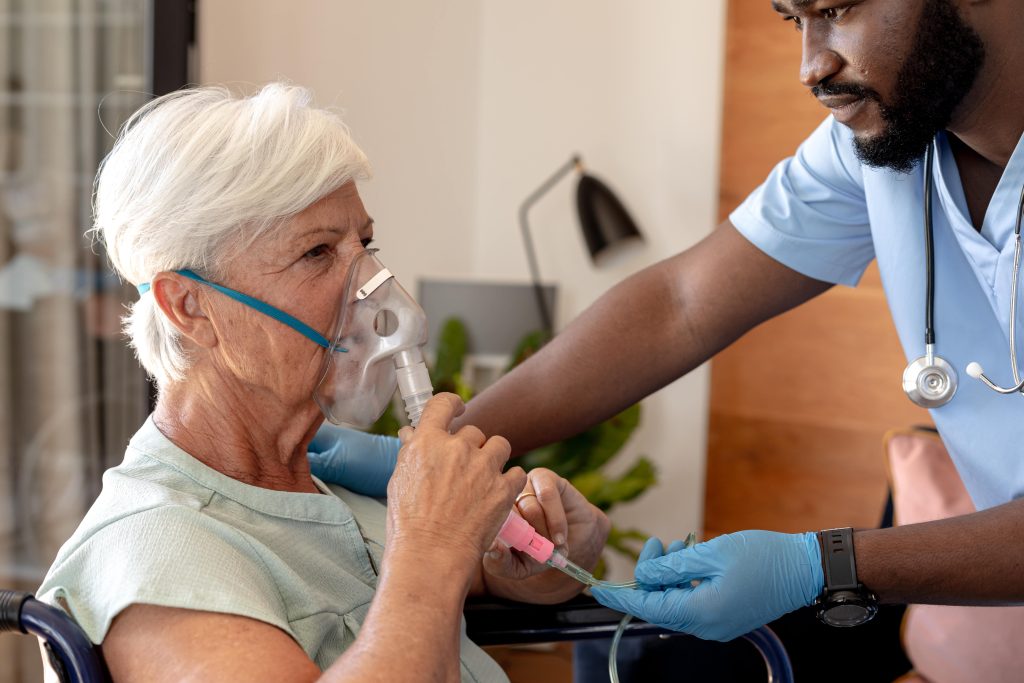
How Is The Need For Long-Term Oxygen Therapy Determined?
The need for long-term oxygen therapy (LOT) is determined by looking at the oxygen level in the patient’s blood, measured by arterial blood gas analysis or pulse oximetry at rest. LOT is usually initiated if the blood oxygen level (PaO2) is below 55 mmHg or below 59 mmHg with additional pulmonary hypertension or heart failure. This is a form of treatment meticulously determined by the doctor to prolong the patient’s life.
Does The Response To Treatment Differ Between Different Types Of COPD?
Yes, the response to treatment differs between emphysema-dominant and chronic bronchitis-dominant types of COPD. Emphysema-dominant patients may respond better to bronchodilators aimed at reducing air trapping and volume reduction interventions like valves or LVRS. Chronic bronchitis-dominant patients prioritize medication therapies focused on reducing symptoms and phlegm production (mucolytics) and preventing infections. This distinction is vital for a personalized treatment plan.
Why Is High-Resolution Tomography (HRCT) Important In COPD Treatment?
High-Resolution Computed Tomography (HRCT) is important in COPD treatment for detailed staging of the disease type and severity. HRCT clearly shows the distribution of emphysema in the lung, the condition of the bronchi, and the presence of bronchiectasis. This detailed imaging plays a key role in evaluating suitability for volume reduction treatments like bronchoscopic valve or LVRS and determining the best treatment approach.
Are Vaccines Part Of The Treatment For COPD Patients?
Yes, vaccines are an indispensable and protective part of the treatment for COPD patients. Flu and pneumonia (pneumococcal) vaccines prevent even simple infections from leading to life-threatening exacerbations and hospitalizations in COPD patients. These vaccines strengthen the immune system, protect the patient’s respiratory tract, and reduce treatment costs. Doctors strongly recommend that all COPD patients keep their vaccination schedules up to date.
Which Specialists Should Be Consulted For COPD Treatment?
For COPD treatment, fundamentally a Chest Diseases Specialist (Pulmonologist) should be consulted. However, since COPD management requires a multidisciplinary approach, support from a Pulmonary Rehabilitation Specialist/Physiotherapist, Nutritionist (Dietitian), and, if necessary, a Psychologist/Psychiatrist should be sought at specialized treatment centers. For advanced and complex cases, the opinion of a Thoracic Surgery specialist is also important.
What Is The Difference Between Asthma And COPD Treatment?
The fundamental difference between asthma and COPD treatment is the reversibility of the disease. Since asthma is reversible airway narrowing, treatment usually aims for complete control with inhaled corticosteroids. In COPD, the damage is permanent, and treatment focuses only on managing symptoms and slowing progression. While the main cause of exacerbations in asthma can be allergies, the main cause in COPD is smoking and irritants.
What Is The Role Of Non-Invasive Ventilation (NIV) Devices In Treatment?
Non-Invasive Ventilation (NIV) devices (e.g., BiPAP) play a vital role in supporting inadequate breathing in advanced-stage COPD, especially during sleep or exacerbations. These devices provide positive air pressure via a mask, preventing respiratory muscle fatigue and reducing carbon dioxide levels in the blood. NIV is a major support in preventing hospitalization and improving the patient’s quality of life.
Is There A Use For Biological Agents In COPD Treatment?
The use of biological agents in COPD treatment is primarily for selected patient groups with Asthma-COPD Overlap (ACOS) and high eosinophilic inflammation. These agents target specific inflammatory pathways in the body, which can dramatically reduce the number of exacerbations. This treatment option is promising and personalized for patients whose symptoms cannot be controlled despite standard inhaled treatments and who possess these biological markers.
Is Long-Term Steroid Use Part Of The Treatment?
Long-term oral steroid use is not a permanent part of COPD treatment and is generally not recommended due to severe side effects. Inhaled corticosteroids are used to control local inflammation. Oral steroids are used only for severe exacerbations, short-term, and under specialist supervision. Long-term oral steroid use increases the risk of bone thinning and infection.
What Is The Importance Of Stress And Anxiety Management For COPD Patients?
Stress and anxiety management is an integral part of the treatment for COPD patients. The sensation of shortness of breath triggers anxiety, which leads to panic and an increase in respiratory rate, further aggravating the shortness of breath (vicious cycle). Breathing techniques, relaxation exercises, and psychological support help patients manage panic attacks and improve their coping skills with shortness of breath, enhancing overall quality of life.
What Are The Consequences Of Starting To Smoke Again During COPD Treatment?
The consequences of starting to smoke again during COPD treatment are disastrous. Smoking rapidly restarts the progression of the disease, reduces the effectiveness of all drug treatments, and dramatically increases the risk of exacerbations. Smoking again accelerates the decline in lung function, leading to oxygen dependence and a significant reduction in life expectancy. Therefore, the decision to quit smoking is a fundamental commitment that must be maintained for life.
What Is The Life Expectancy In COPD Treatment?
Life expectancy in COPD treatment largely depends on the stage of the disease, whether the patient quits smoking, and adherence to treatment. In patients caught in the early stages who quit smoking, life expectancy is close to normal. Even in advanced stages, life expectancy can be significantly prolonged and quality of life preserved with correct medications, pulmonary rehabilitation, and oxygen therapy. Modern treatments are continuously improving the prognosis.
Can COPD Be Completely Reversed Without Lung Transplantation?
No, COPD cannot be completely reversed without lung transplantation because the structural damage is irreversible. However, minimal invasive interventions like BLVR reduce the function of damaged lung areas, providing a relative improvement. This means the patient’s remaining healthy tissues work better. This does not reverse functions but significantly alleviates symptoms, increases exercise capacity, and restores some of the patient’s quality of life.
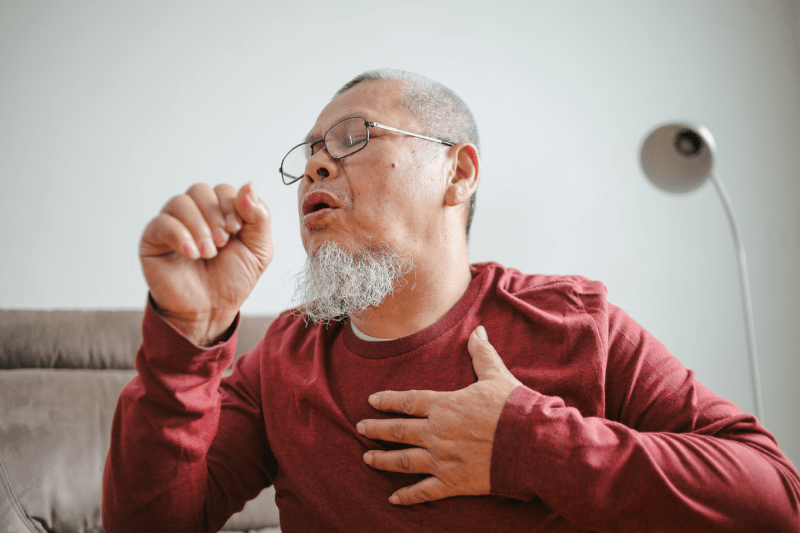
What Is The Technological Infrastructure Of COPD Treatment Centers in Turkey Like?
The technological infrastructure of COPD treatment centers in Turkey is highly developed and at international standards. These centers are equipped with state-of-the-art HRCT imaging systems, advanced bronchoscopic diagnosis and treatment units (valve/coil), and multidisciplinary pulmonary rehabilitation laboratories. This technological competency offers international patients rapid access to the most current diagnosis and minimal invasive treatment options.
How Is The Management Of Emphysema And Chronic Bronchitis In COPD Treatment?
The management of emphysema and chronic bronchitis in COPD treatment differs. Emphysema management focuses on bronchodilators aimed at reducing air trapping and volume reduction interventions. Chronic bronchitis management focuses on reducing airway inflammation, controlling phlegm production (mucolytics), and preventing infections. Combined therapies generally aim to provide the best outcome by targeting both conditions.
What Are The Long-Term Benefits Of Starting COPD Treatment Early?
The long-term benefits of starting COPD treatment early are the significant slowing of disease progression and the longer preservation of lung functions. Quitting smoking in the early stages and regular medication use reduce progressive damage. This minimizes the patient’s risk of respiratory failure and oxygen dependence in later years, maximizing the chance of a long and active life.
What Are The Side Effects Of Medications Used In COPD Treatment?
The side effects of inhaled medications used in COPD treatment are less than those of tablet medications, but they can still be seen. Bronchodilators can sometimes cause heart palpitations, tremors, and dry mouth. Inhaled corticosteroids increase the risk of fungal infection (thrush) in the mouth and throat when used regularly; therefore, rinsing the mouth after every use is recommended. These side effects are usually manageable, and treatment discontinuation is rare.
What Extent Do Lifestyle Changes Constitute Of The Treatment?
Lifestyle changes constitute at least 50% of COPD treatment. While medications control symptoms, lifestyle changes (smoking cessation, exercise, healthy diet, vaccines) halt the progression of the disease and guarantee long-term success. A sedentary patient who continues to smoke cannot prevent the rapid progression of their disease despite the best medications. Therefore, an active lifestyle, in addition to surgical and drug treatment, forms the backbone of the therapy.
What Is The Follow-Up Process After COPD Treatment In Turkey Like?
The follow-up process after COPD treatment in Turkey is personalized according to the needs of international patients. Regularly, starting more frequently in the first years, pulmonary function tests (PFT) and physician consultations are conducted. For international patients, these follow-ups are usually managed with tele-medicine consultations and comprehensive visits once a year. This follow-up system is vital for maintaining treatment discipline and early detection of exacerbations.
When Is Psychological Support Necessary In COPD Treatment?
Psychological support in COPD treatment is necessary whenever the patient experiences anxiety, depression, and panic attacks related to shortness of breath. This chronic disease can lead to social isolation, avoidance of physical activity, and hopelessness in patients. Support from a psychologist or psychiatrist critically contributes to the patient’s psychological strengthening, increased adherence to treatment, and improved quality of life.
Is There An Age Limit For COPD Treatment?
There is no definitive upper age limit for COPD treatment. Treatment decisions are made by considering the patient’s general health status, comorbidities, and performance rather than their chronological age. For example, a 75-year-old patient with good performance can receive more intensive treatment than a 60-year-old patient with severe heart disease. Age criteria are stricter for surgical interventions (LVRS or transplantation), but every patient is still evaluated individually.
What Is The Cost Effect Of Respiratory Devices In COPD Treatment?
The cost effect of respiratory devices (oxygen concentrators, NIV) in COPD treatment is high, but these devices are a necessary investment as they prolong life and improve quality of life. The cost of purchasing or renting these devices in Turkey is more affordable compared to Western countries. In the long run, the use of these devices is actually a cost-effective solution as it prevents much higher cost situations that would arise from exacerbations and ICU stays.
How Are COPD Treatment Processes Initiated In Turkey?
COPD treatment processes in Turkey are initiated by gathering all current medical reports (PFT results, CT images) and applying to Cure Holiday, an internationally specialized health tourism consultancy company. Cure Holiday forwards your reports to the most competent chest diseases specialists and advanced treatment centers in Turkey. Experts prepare a personalized treatment plan (medication, rehabilitation, possible interventions), ensuring the patient quickly accesses the most suitable treatment without a waiting period.
What Is The Biggest Factor Impeding Treatment Success In COPD?
The biggest factor impeding treatment success in COPD is the patient’s continuation of the smoking habit and non-adherence to treatment discipline. Continuing to smoke nullifies the effect of all applied medical and surgical treatments and accelerates the progression of the disease. Incorrect use of inhaler medications or neglect of regular rehabilitation sessions are also major reasons for treatment failure.

What Are The Prices Of Biological Agents Used In COPD?
The prices of biological agents used in COPD (if there is an ACOS indication) are quite high because they are new-generation, targeted, and laboratory-produced drugs. These drugs are usually administered via injection at monthly or bi-weekly intervals. Thanks to the health tourism advantage in Turkey, the cost of these agents can be offered at more accessible levels compared to Western countries, but they still constitute the most expensive item of general COPD treatment.
What Are The Advantages Of Minimal Invasive Interventions In COPD Treatment?
The advantages of minimal invasive interventions (BLVR) in COPD treatment are shorter hospital stays, less pain, and faster recovery compared to traditional surgery. These methods cause less damage to lung tissue while offering advanced-stage emphysema patients at high surgical risk the opportunity to improve their respiratory functions.
Which Weather Conditions Are Considered More Risky For COPD Patients?
Extremely hot and humid weather and extremely cold weather conditions are considered riskier for COPD patients. Extreme cold causes spasm and narrowing in the airways, while extremely humid and hot weather increases respiratory distress by making breathing more difficult. Additionally, air with high levels of air pollution and pollen can also trigger exacerbations. Therefore, patients are advised to check weather forecasts and pollution levels before going outdoors.
How Does Delay In Treatment Affect COPD’s Recovery Potential?
Any delay in COPD treatment negatively and irreversibly affects the recovery potential. Early diagnosis and immediate start of treatment are vital for slowing the decline in lung function. Delaying treatment can lead to increased permanent damage, rapid depletion of lung reserves, and eventually oxygen dependence. Since lost function cannot be recovered in COPD, time is the most critical factor for treatment success.
What Is The Importance Of A Multidisciplinary Approach In COPD Treatment?
The importance of a multidisciplinary approach in COPD treatment stems from the complex and multi-dimensional nature of the disease. This approach ensures that specialists such as a Pulmonologist, physiotherapist, dietitian, and psychologist come together to address the patient’s physical and psychosocial needs holistically. This collaboration aims for the highest treatment success by improving the health of not only the lungs but the entire body and mind.
What Are The Long-Term Benefits Of Receiving Treatment In Turkey?
The long-term benefits of receiving treatment in Turkey are access to affordable and high-quality long-term follow-up. Effective treatment initiated at centers in Turkey prolongs the patient’s lifespan and reduces the risk of exacerbations. Furthermore, thanks to tele-medicine opportunities and ease of travel, patients can continue regular control and rehabilitation programs without disrupting treatment discipline or incurring high costs.
What Is The Target Level For Respiratory Function In COPD Treatment?
The target level for respiratory function in COPD treatment is generally determined by the stage of the disease, but the primary goal is to slow down the rate of decline in the FEV1 value. Treatment aims to preserve the patient’s existing FEV1 value or slightly improve it if possible. Most importantly, the goal is to keep shortness of breath at a level that does not impede daily activities and to increase the patient’s exercise tolerance. Increasing the FEV1 value is difficult; the real success is enabling the patient to breathe better in daily life.
What Commitments Are Required For Long-Term Success In COPD Treatment?
The fundamental commitments expected from COPD patients for long-term success are: Lifelong Smoking Cessation, uninterrupted and correct use of all inhaler medications recommended by the doctor, regular physical activity (pulmonary rehabilitation), annual vaccination against flu and pneumonia, and adherence to all follow-up appointments. These disciplined commitments are the cornerstones of managing the chronic nature of the disease and preserving the quality of life.
COPD is a disease that can be controlled even though it cannot be cured. Advanced technology centers in Turkey are ready to offer you the most current and personalized solutions to halt the progression of the disease and improve your quality of life.
To get the most effective treatment plan tailored to your disease stage, quickly access advanced treatment options like pulmonary rehabilitation and bronchoscopic interventions, and receive professional health tourism support throughout the process, contact Cure Holiday immediately. Take your first step toward healthier breathing in Turkey.
